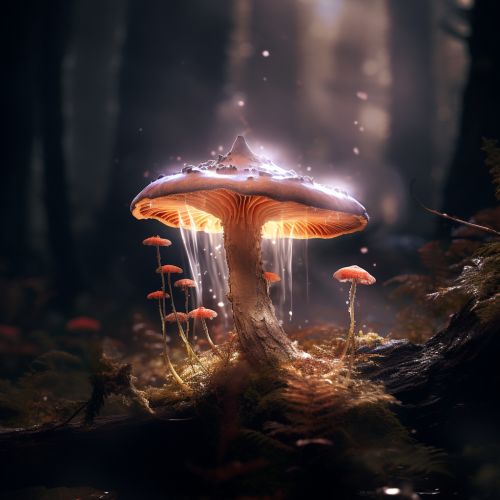Phototropism
Introduction
Phototropism is the growth of organisms in response to a light stimulus. It is most often observed in plants, but can also occur in other organisms such as fungi. This process helps to maximize the efficiency of light absorption, which is crucial for photosynthesis. Phototropism is a type of tropism, alongside gravitropism (response to gravity), thigmotropism (response to touch), and hydrotropism (response to water). The direction of growth may be towards the light source (positive phototropism), away from it (negative phototropism), or can be determined by the organism's life stage or the type of light, such as red or blue light.


History of Phototropism Research
The phenomenon of phototropism was first described by the Greek philosopher Theophrastus in his work "On the Causes of Plants" around 300 BC. However, it was not until the 19th century that significant progress was made in understanding the underlying mechanisms. Charles Darwin and his son Francis Darwin conducted a series of experiments, published in their book "The Power of Movement in Plants" (1880), which established the role of the plant tip in sensing light direction. They also proposed that a signal is then transmitted to lower parts of the plant, causing differential growth and bending towards the light. This was the first proposal of what is now known as the Cholodny-Went theory, named after the scientists who further developed it in the 20th century.


Mechanisms of Phototropism
Phototropism is controlled by the plant hormone auxin. When light is shone on one side of a plant, auxin is distributed towards the shaded side. This causes cells on the shaded side to elongate more than those on the illuminated side, resulting in a bending towards the light. The redistribution of auxin is thought to be facilitated by auxin transport proteins located at the plasma membrane of the plant cells.
The perception of light is mediated by photoreceptors, proteins that can absorb light and initiate a cellular response. In plants, the photoreceptors involved in phototropism are known as phototropins. These proteins absorb blue light and trigger a signal transduction pathway leading to the redistribution of auxin.


Phototropism in Other Organisms
While phototropism is most commonly associated with plants, other organisms can also exhibit this behavior. Certain species of fungi, for example, can orient their growth towards light, which may help them to maximize their exposure to potential food sources. Some bacteria also exhibit phototropism, which can influence their ability to photosynthesize or degrade pollutants.


Practical Applications
Understanding the mechanisms of phototropism has practical applications in agriculture and horticulture. For example, manipulating light conditions can influence plant growth and development, which can be used to increase crop yields or control the shape of ornamental plants. In addition, the study of phototropism can provide insights into more general aspects of plant biology, such as how plants sense and respond to their environment.


See Also
References
- ↑ Cholodny, N. (1927). Wuchshormone und Tropismen bei den Pflanzen. Biol. Zentralbl, 47, 604-626.
- ↑ Went, F. W. (1928). Wuchsstoff und Wachstum. Recueil des Travaux Botaniques Néerlandais, 25(1), 1-116.
- ↑ Darwin, C., & Darwin, F. (1880). The Power of Movement in Plants. John Murray.
- ↑ Theophrastus. (c. 300 BC). On the Causes of Plants. Translated by Arthur Hort, 1916.
